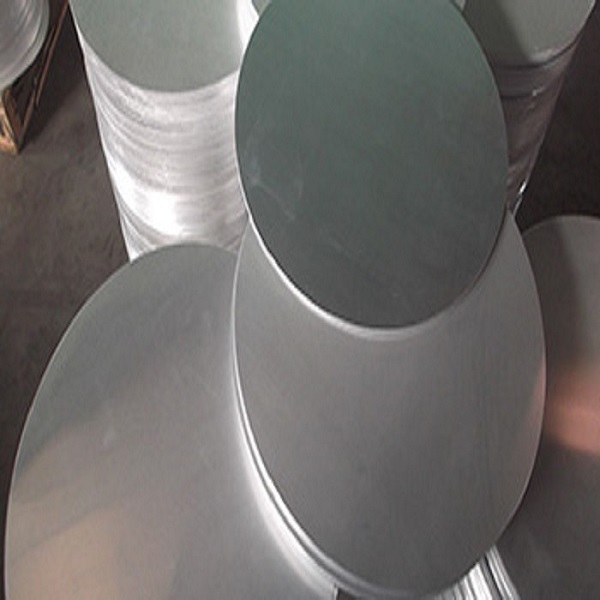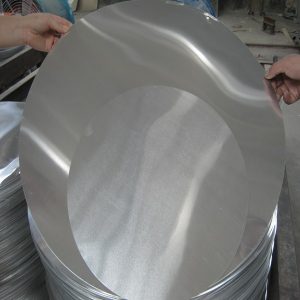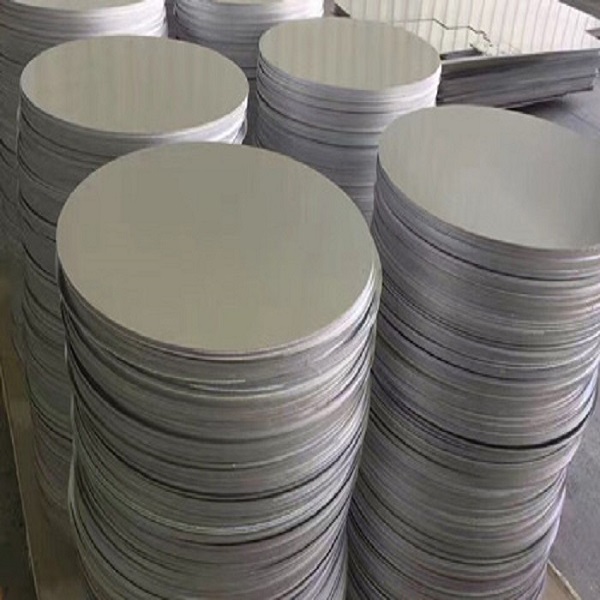Beschreibung
Spinning aluminium circle is an aluminum product manufactured by spinning process and has a wide range of applications.
The spinning process is a metal processing method. Through the rotation and pressure of the spinning machine, the aluminum alloy material is gradually deformed under the action of the mold, and finally the required shape is obtained.
Aluminum circle are widely used in electronics, daily chemicals, Medizin, culture, education and auto parts. Electrical appliances, Isolierung, machinery manufacturing, Autos, Luft- und Raumfahrt, military industry, molds, Konstruktion, printing and other industries.
Spinning aluminium circles has many advantages, such as efficiency, precision and economy. Since the aluminum alloy material itself has the characteristics of light weight, hohe Festigkeit, und Korrosionsbeständigkeit, spinning aluminum circles can meet the needs of material performance in various fields.
In the field of automobile manufacturing, spinning aluminium circles can be used to manufacture automobile bodies, Türen, roofs and other parts, helping to achieve the goals of automobile weight reduction, energy conservation and environmental protection.
In the aerospace field, spinning aluminium circles can be used to manufacture parts such as aircraft fuselages and airfoils, and have good mechanical properties and corrosion resistance.
In Ergänzung, in the construction field, spinning aluminium circles can be used to manufacture doors, Fenster, Vorhangfassaden, balconies and other building components to meet the building’s material performance and appearance requirements.
The material producing Aluminum discs need to have good tensile properties, oxidation resistance, mechanical strength, thermal conductivity and good processing properties.
Derzeit, in terms of material selection of aluminum discs, aluminum alloy has become the mainstream choice. It is superior in mechanical properties and stamping processing and is widely used.
Commonly used aluminum alloys include 1050, 1060, 6061, 7075, etc. In Ergänzung, there are additives such as Mg, und, Zn, etc. to improve the strength and corrosion resistance of aluminum alloys.
The rolling method is one of the main methods for producing aluminum discs. The principle of sheeting is to process the aluminum alloy billet in a hot state through multiple processes such as heating, rollen, and stretching.
The stretching method is to stretch aluminum alloy blanks through a series of mechanical devices to produce aluminum discs. This method has a short process flow and high production efficiency, and is suitable for producing wafers of various specifications.
The casting method uses molten aluminum as raw material and produces aluminum discs through centrifugal pouring or die casting.
Aluminum disc or Kreis aus Aluminium, also called aluminum wafers have a variety of surface treatment methods to improve their brightness, Korrosionsbeständigkeit, wear resistance, etc. Currently, oxidation, spraying, etc. are commonly used.
Größe des Aluminiumblechs
Legierung:1050, 1060, 1070, 1100, 3002, 3003, 3004, 5052, 5754, 6061 etc.
Temperament: die, H12, H14, H16, H18
Dicke:0.012″ – 0.39″ (0.3mm – 10mm)
Durchmesser:0.79″ – 47.3″ (20mm -1200mm)
Oberfläche: Poliert, Hell, Eloxiert
Mutterspule: CC oder DC
Gewicht: Ungefähr 2mt pro Palette für allgemeine Größe
MOQ: 5Tonne pro Größe
Schutz: Papierzwischenlage, weiße Folie, blaue Folie, Schwarz-Weiß-Film, mikrogebundener Film, entsprechend Ihrer Anforderung.
Oberfläche: sauber und glatt, kein heller Fleck, Korrosion, Öl, geschlitzten, etc.
Standardprodukt: GBT3880, JIS4000, EN485, ASTM-B209
Lieferzeit: ungefähr 30 Tage nach Erhalt der Anzahlung
1050 Aluminum Circle and 1100 Aluminiumscheibe: A Comprehensive Guide
Aluminum circles and discs are essential materials used in various industries due to their excellent properties such as lightweight, Korrosionsbeständigkeit, and high thermal and electrical conductivity.
Among the many types of aluminum alloys available, das 1050 und 1100 series are popular choices for producing circles and discs due to their versatility and performance. In this comprehensive guide, we will explore the characteristics, uses, and benefits of 1050 aluminum circle and 1100 Aluminium Scheibe.
1050 Aluminium-Kreis:
1050 aluminum is a commercially pure aluminum alloy with excellent formability, hohe Korrosionsbeständigkeit, and good electrical conductivity.
It is widely used in the manufacturing of cookware, utensils, lighting reflectors, Beschilderung, and various other applications that require a high level of formability and corrosion resistance.
1050 aluminum circles are produced by stamping or spinning processes to create discs of various diameters and thicknesses.
Key features of 1050 aluminum circle include:
1. Excellent formability: 1050 aluminum is highly malleable and can be easily formed into complex shapes without cracking or breaking, making it ideal for applications that require intricate designs.
2. Korrosionsbeständigkeit: The pure aluminum content in 1050 alloy provides excellent resistance to corrosion in various environments, ensuring long-term durability and reliability.
3. High thermal conductivity: 1050 aluminum has a high thermal conductivity, making it suitable for applications requiring efficient heat transfer, such as cookware and heat exchangers.
4. Electrical conductivity: This alloy also exhibits good electrical conductivity, making it suitable for electrical applications such as transformers and capacitors.
1100 Aluminiumscheibe:
1100 aluminum is another commercially pure aluminum alloy known for its excellent weldability, Korrosionsbeständigkeit, and high thermal and electrical conductivity.
1100 aluminum discs are widely used in the production of cookware, traffic signs, lamp housings, and various other applications that require a combination of formability and strength. The discs are typically produced through cutting or stamping processes to achieve the desired dimensions and surface finish.
Key features of 1100 aluminum disc include:
1. Schweißbarkeit: 1100 aluminum exhibits excellent weldability, allowing for easy joining with other aluminum alloys or dissimilar materials using various welding techniques.
2. Korrosionsbeständigkeit: Similar to 1050 Aluminium, 1100 alloy offers good corrosion resistance, making it suitable for outdoor applications or environments with exposure to moisture.
3. High reflectivity: 1100 aluminum has a high reflectivity, making it an ideal choice for applications requiring reflective surfaces, such as lighting fixtures and solar panels.
4. Nicht wärmebehandelbar: 1100 aluminum is a non-heat treatable alloy, meaning its mechanical properties are primarily determined by its composition and processing rather than heat treatment.
In conclusion, 1050 aluminum circle and 1100 aluminum disc are versatile materials with unique properties that make them suitable for a wide range of applications in various industries.
Whether you need formability, Korrosionsbeständigkeit, high thermal conductivity, or electrical conductivity, these aluminum alloys offer practical solutions for your manufacturing needs. Consider utilizing 1050 aluminum circle and 1100 aluminum disc for your next project to benefit from their outstanding performance and reliability.
Aluminum Discs Normally belongs to 1000 series aluminum circle. Aluminiumkreis is the one of the deep-processing products of the aluminum sheet plate.
Aluminum Disk Discs has single production process and high-cost performance. It is commonly used in aluminum plate and tape series.
1060 Aluminum alloy has good elongation, tensile strength, Korrosionsbeständigkeit, good heat dissipation effect and good formability. It can meet the requirements of conventional processing.
Aluminium-Kreis is mainly used for general commercial and industrial uses, like the capacitor case, toothpaste case, medical tubes, kitchen ware, spray bottle, cosmetic case and glue tube case, Straßenschild, Kochgeschirr, Topf, pan, decorating and so on.
With high quality casting and rolling coils or hot-rolled coils as raw materials, it goes through different cold rolling deformation. slitting, annealing and finally stamping into an aluminum disc, then packaging for delivery





-
-
-